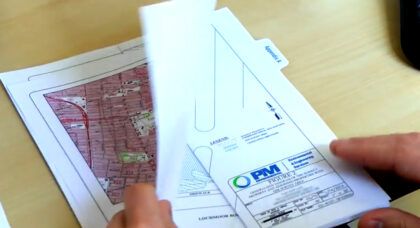Why do I need to worry about vapor intrusion?
Why do I need to worry about vapor intrusion?
Vapor intrusion results from chemical vapors emanating from contaminated soil or groundwater that impacts the indoor air of a building. The chemical vapors can seep into openings in cracked foundations, basements, or sewer lines or, depending on the identified compounds, can simply migrate through the floor slab.
As environmental professionals remediate or cleanup a contaminated property for a third party or government institution, vapor intrusion can be a threat to human health as well as the environment. Low levels of common contaminants are associated with minor health risks, however higher concentrations of vapor intrusion have been linked to causing cancer.

The Environmental Protection Agency (EPA), recently amended the Phase I ASTM standard under the Site Remediation Program with the additional focus on vapor intrusion. The EPA or state level regulatory agencies may issue No Further Remediation (NFR) or No Further Action (NFA) letters, which is a confirmation that a property isn’t a threat to human health or the environment. Historically, vapor intrusion was not a consideration for NFR/NFA letters.
How can I tell if I have vapor intrusion?
Assessment of soil, groundwater, soil gas, and/or indoor air conducted by professional environmental due diligence consultants can determine if vapor intrusion standards are met or if further evaluation, remediation, or mitigation is necessary. The initial need to complete sampling is often based upon review of historical information, review of available regulatory records, or current observations that are typically completed during environmental due diligence activities.
How does this affect my property?
Vapor intrusion can lead to problems including human health risks and associated liability with long term exposure to inhalation, including dizziness, headaches, nausea and more or other safety risks if encountered explosive gases.
The identification of a vapor intrusion condition may also result in a decrease of the value of the property or require remediation or mitigation for a property to be safely habitable or ultimately saleable.
What should I do?
Complete environmental due diligence activities to identify potential or known sources of vapor intrusion associated with the property or nearby properties to determine if further evaluation or controls are required.
Buyers could have a false sense of security if they purchase a property which obtained a NFR/NFA letter issued before the Phase I ASTM standard changed in 2013 or prior to state level regulatory changes. Consider reevaluating the data or contracting an expert to ensure no onsite vapor intrusion exists or poses a threat.
How much will it cost?
Evaluating vapor intrusion can include additional procedures and analytical tests that can increase the costs of assessment activities. The overall costs will be contingent on the concerns identified and the area that needs to be evaluated. The costs associated with controlling vapor intrusion will vary based on the contaminants identified, property layout, geology, building construction, and the selected method of control.
Talk to Antoniewicz or any of our qualified professionals at PM Environmental by calling 800.313.2966 or contacting us through our website.
* Image courtesy of EPA.gov
Publication Details
Date
November 14, 2016



